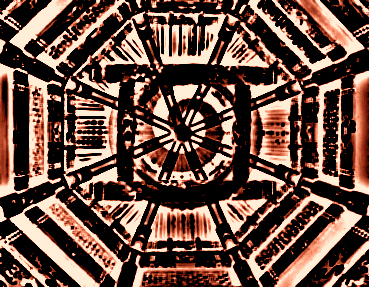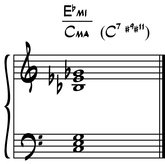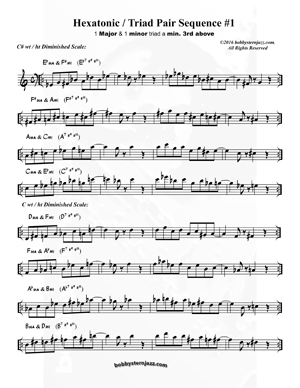8 Will Get You Six - A Diminished Scale Hexatonic

Because of its alternating whole step / half step (and vice versa) interval scheme, a symmetrical scale structure is formed, which divides the octave into 4 equal parts, spaced in minor thirds.
This symmetrical construction not only builds diminished triads and 7th chords on each of its scale steps, but forms, as well, a number of leaner, meaner 6 note permutations of the original 8 note scale, consisting of several combinations of Major and minor triads.

Formed vertically as a chord, this configuration spells out a C7 #9#11 (Eb min. over C Maj).
Functionally, if employed as a bII7, it resolves smoothly to Bb min over B Maj. (B Maj7#11) or C# Maj. over B Maj (B 6/9 #11).
Expressed melodically, the ear would perceive it as having both Maj and min 3rds, as well as both a flat and natural 5th. This creates a strong blues oriented flavor.
Although formed from the above mentioned Major and minor triads, this particular line, ascending and descending in diatonic 3rds, might more accurately be considered a hexatonic line rather than a triad pair, as I have sometimes wondered what the difference is, if any, between the two.
So then, what is the difference?
A triad pair, by definition, is two mutually exclusive triads (i.e. no repeated notes between them). A hexatonic scale can be any scale containing six notes.
A triad pair, being comprised of six notes, will always be hexatonic, while a hexatonic scale need not be a triad pair. Also, the order in which the triads are presented is not always important, although it can make a difference as to how one hears the root or tonic of that particular group of pitches..
A line from a triad pair might alternate through several inversions of each complete triad (eg. G-C-E-G, Gb-Bb-Eb-Gb, E-G-C-E, Eb-Gb-Bb-Eb, etc.); whereas a hexatonic line, such as the subject of this post, might be expressed in a non-triadic, linear fashion.
The net harmonic flavor would be about the same with both, the difference being the effect that the melodic order and rhythm of the line would have on the listener.
Or am I just be splitting hairs here?
Also of note is the close relationship this 6 note scale has with the 5th mode of an Eb Pentatonic b2 (C - Eb - E - G - Bb).
In fact it is a Penta b2 with an added Gb.
There are 4 of these mutually exclusive hexatonic / triad pairs found in each of the three diminished scales, making 12 in all.

 RSS Feed
RSS Feed









